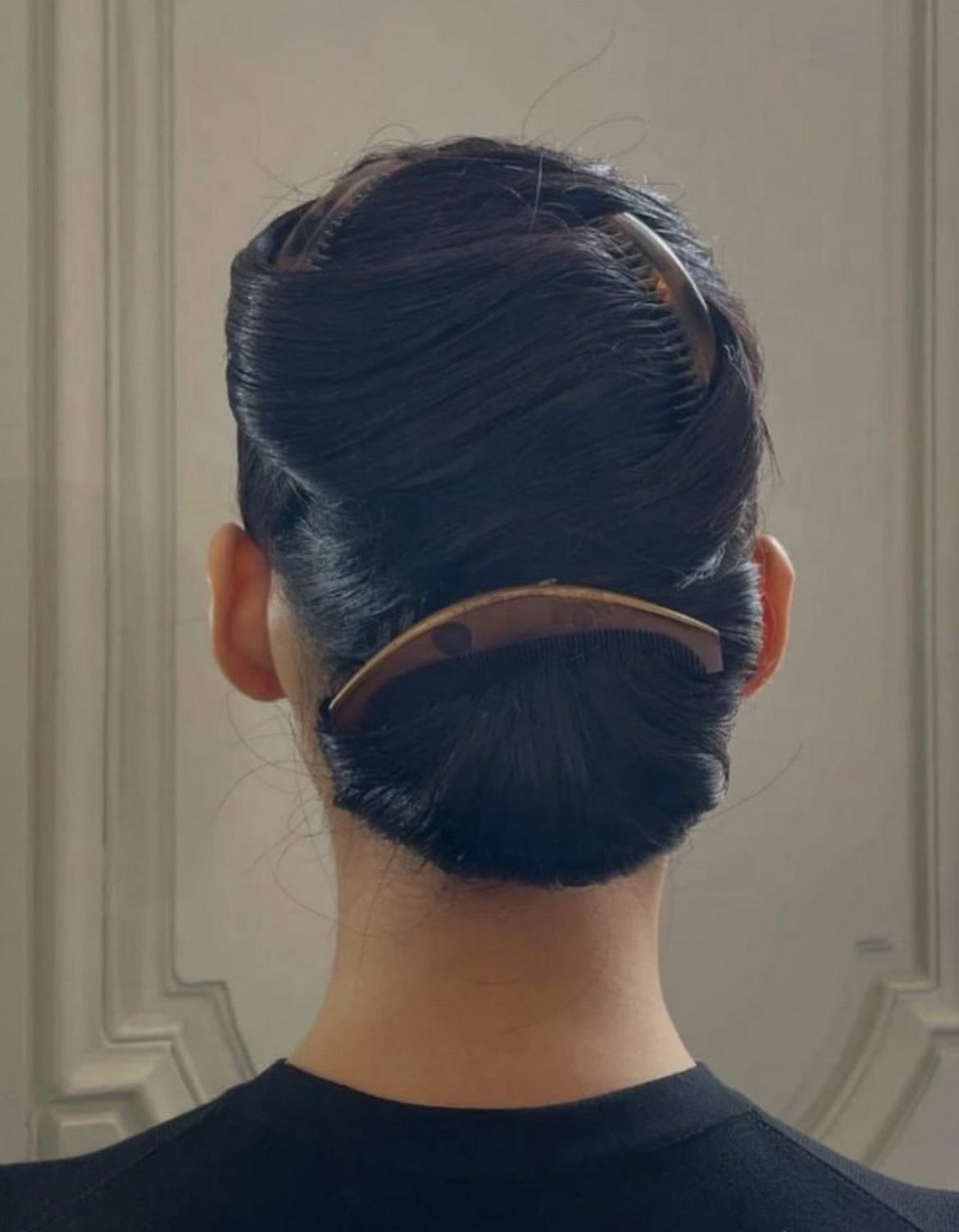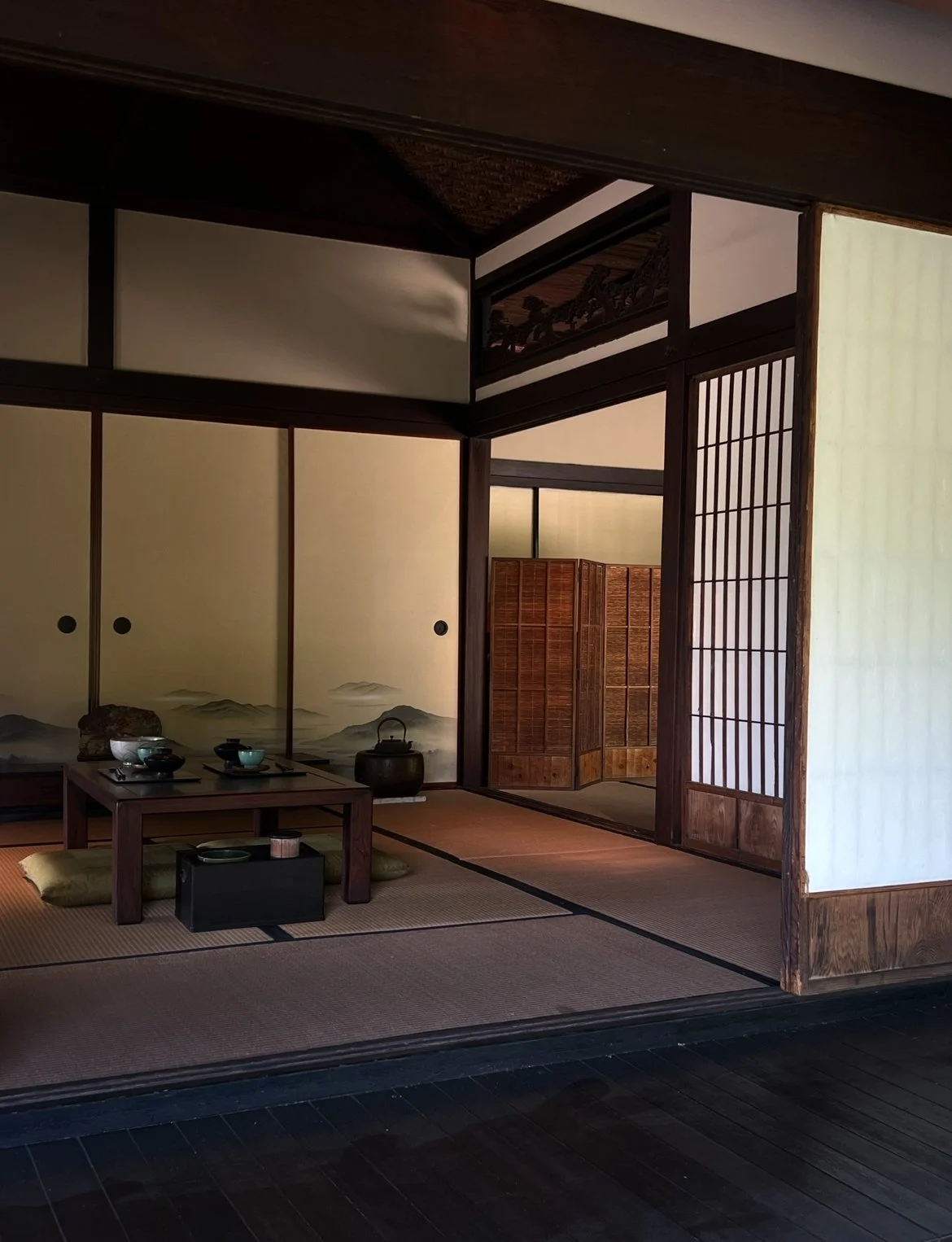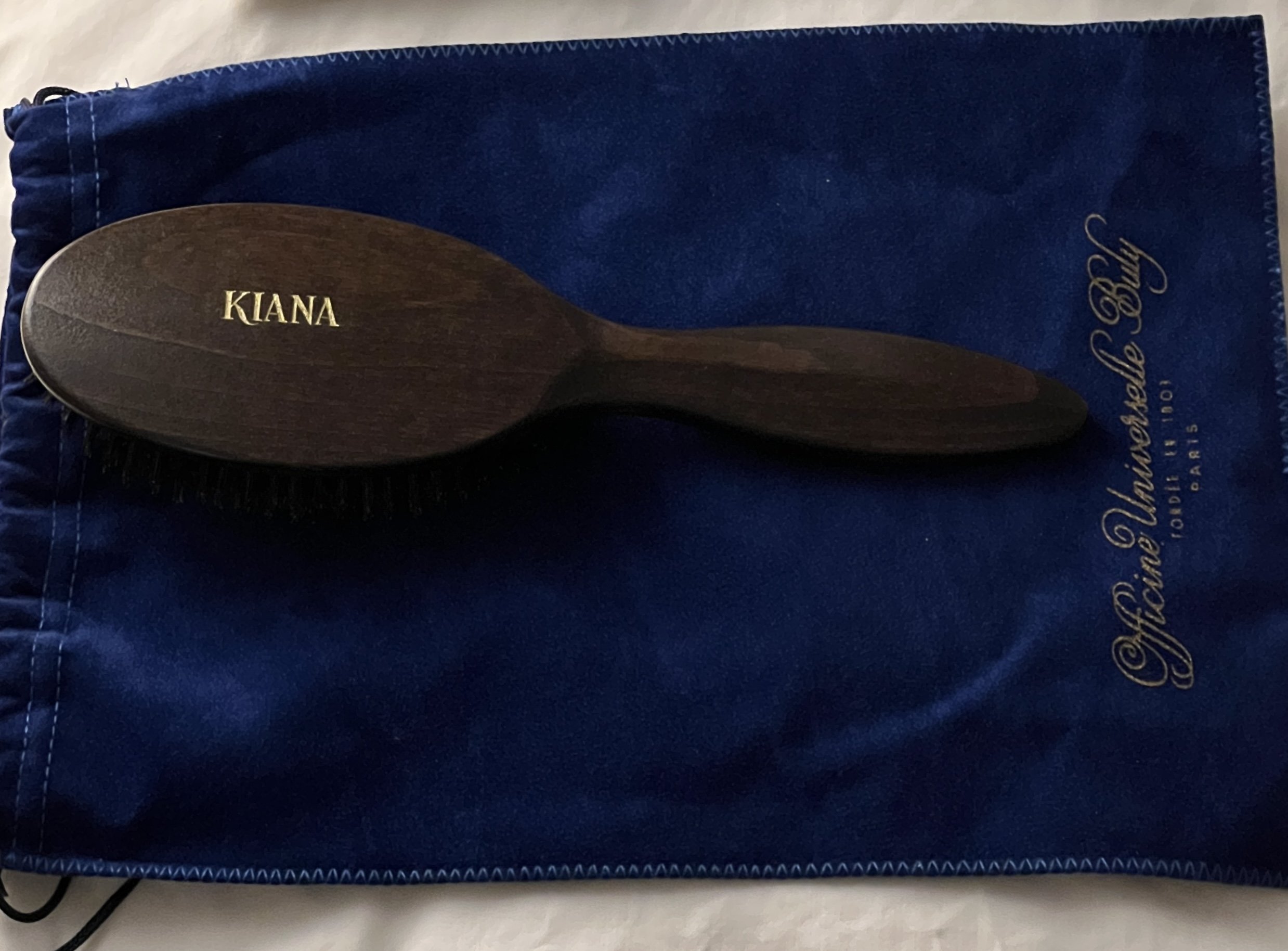The Legacy of The Hair Comb
It all started with a single image the Instagram algorithm pushed on my feed. Elegant, minimalist, timeless hairstyles worn by models at the latest Summer 2026 show for The Row. Famously a no-phone show, The Row’s latest collection was a symphony of what it all stands for: timeless, soft, unspoken elegance, intertwined with the past and present.
Suddenly, the hairstyles with combs were all I could see on my feed. Once I saved one, I had to save them all. I’m still trying to figure out how I can recreate these hairstyles without the aid of a professional hairstylist, or Guido Palau himself.
A Brief History:
The longer I sat with these images, the more I became obsessed with finding out the origins of Japanese hair combs and its legacy. Upon doing some brief research, it’s generally known that during the Edo period (17th Century), Japanese women began to style their hair in complex shapes and forms known as Nihongami (日本髪). They used oils and wax to keep hair out of their faces since people did not often wash their hair. Japanese boxwood became the key material to create hair combs as it was strong enough to hold the hair without breaking and could be polished to a glossy finish (source).
The combs themselves are made painstakingly through several intricate processes. From selecting the wood to polishing with muku leaves, traditional boxwood Japanese combs are essentially a work of art and a piece of heritage. To read more about the comb making process, read here.
Since each comb is made to last, they can be handed down from generation to generation developing a deeper amber color with each wear. Of course, it’s not just Japanese women who wore hair combs. The first known hair comb is said to have originated from Syria and made its way to the hair of Cleopatra. Ancient hair combs could be found made from seashells, gold, and bone (source). I find it kind of amazing how such a modest accessory could transcend so many cultures, traditions, and eras of style.
Geishas are probably what most people think of when they envision a Japanese hair comb and I imagine the mystery, tradition, and fetishization of the East is what continues to propel its popularity to the modern day.
A traditional Japanese tea room from the Huntington Gardens
Some beautiful hair accessories I spotted at the Petite Palais
Haircare & Wellness:
With so much focus on wellness and self-care, the origins of the Japanese comb seem increasingly relevant. “The Japanese word for comb, kushibi (櫛), translates to “working with spirits” because in ancient times, people would brush their hair as a ritual believing that each strand held spiritual energy” (source).
As someone who is Chinese-Japanese, I’d like to think that the ritual of haircare can connect me to my ancestors. But to be completely transparent, I do almost nothing to take care of my hair. Ultimately, less is more and for me, taking care of my hair manifests through sleep, diet, and not overwashing.
For the longest time, I’ve been obsessed with all things Officine Universelle Buly. I’ve wanted a personalized hair brush or comb from their shops for years now and finally, for my third year anniversary living in Paris, one of my dearest friends, Ivana, gave me one. It is made from smooth beech wood and very soft boar hair for the bristles. A true treasure I’ll keep forever.
As always, thank you for reading and let me know if you’d like me to do more articles like this discussing the intersection of Asian culture with today’s viral fashion moments.
À bientôt,
Kiana
My favorite look from the Summer 2026 Collection (Look 32)
Photo Credits: The Row






